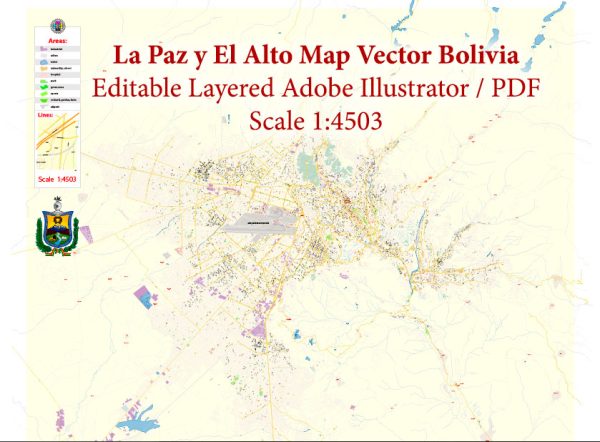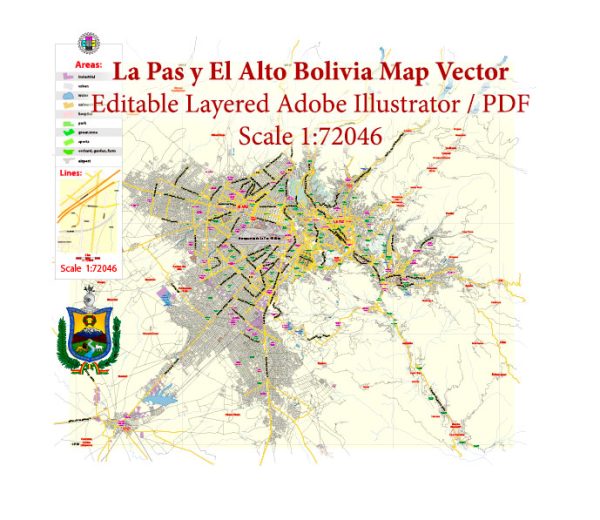La Paz and El Alto are two adjacent cities located in western Bolivia, and together they form the country’s most populous urban area. Each city has its own distinct characteristics, but they are often considered together due to their close proximity. Here’s an overview of the urban amenities in La Paz and El Alto:
La Paz:
- Altitude: One of the most notable features of La Paz is its high altitude, as it is one of the highest capital cities in the world. The city is nestled in a valley surrounded by the high-altitude plateau of the Altiplano.
- City Center: La Paz features a vibrant city center with colonial architecture, bustling markets, and a mix of modern and historic buildings. The San Francisco Church and the Witches’ Market are popular attractions.
- Cable Cars (Teleférico): La Paz is known for its innovative urban transportation system, which includes a network of cable cars (teleférico) that connect different parts of the city. This not only eases transportation but also offers stunning panoramic views of the city.
- Cultural Attractions: The city is home to various museums, galleries, and cultural spaces, showcasing Bolivia’s rich history and indigenous heritage. The National Museum of Art and the Museum of Ethnography and Folklore are notable examples.
- Dining and Nightlife: La Paz boasts a diverse culinary scene with restaurants offering traditional Bolivian dishes as well as international cuisine. The city also has a lively nightlife with bars, clubs, and live music venues.
El Alto:
- Altitude and Growth: El Alto is situated at an even higher altitude than La Paz and has experienced rapid population growth. Originally a sprawling suburb, it has evolved into a major urban center in its own right.
- Street Markets: El Alto is famous for its street markets, where locals sell a variety of goods, including handmade crafts, clothing, and fresh produce. The markets provide a glimpse into the daily life and economic activities of the residents.
- Aymara Culture: El Alto has a significant Aymara indigenous population, and this cultural influence is evident in various aspects of daily life, including traditional dress, music, and festivals.
- Transportation Hub: The city serves as a transportation hub with its international airport, contributing to its economic importance. El Alto is well-connected to La Paz and other parts of Bolivia.
- Commercial and Industrial Zones: El Alto has seen the development of commercial and industrial zones, attracting businesses and contributing to the economic growth of the region.
Together, La Paz and El Alto offer a unique blend of cultural richness, historical significance, and modern amenities, making them important urban centers in Bolivia. The contrast between the two cities, with La Paz being the political and cultural capital and El Alto experiencing rapid growth and economic development, adds to the dynamic character of the region.



 Author: Kirill Shrayber, Ph.D.
Author: Kirill Shrayber, Ph.D.